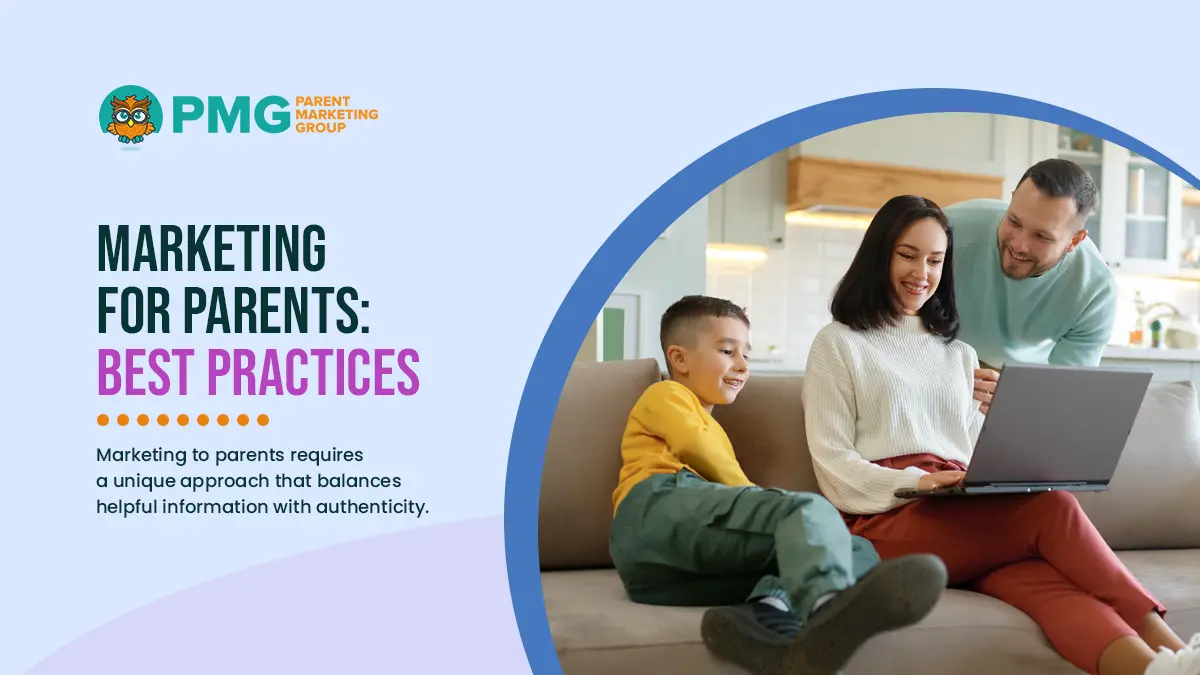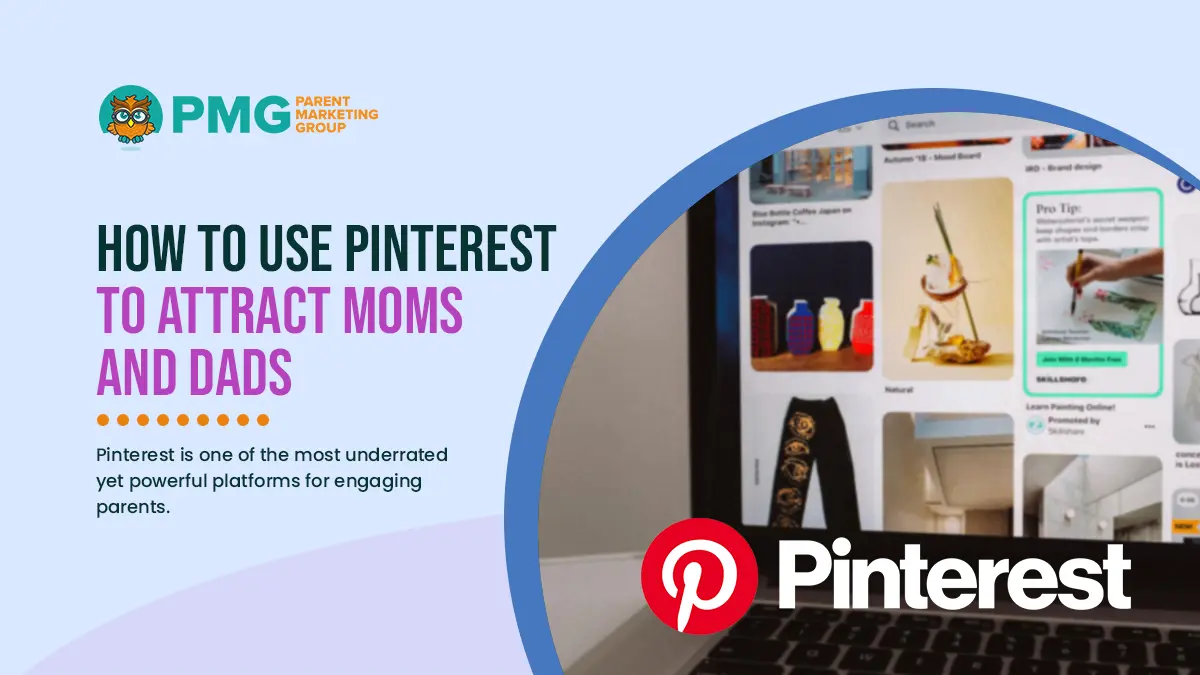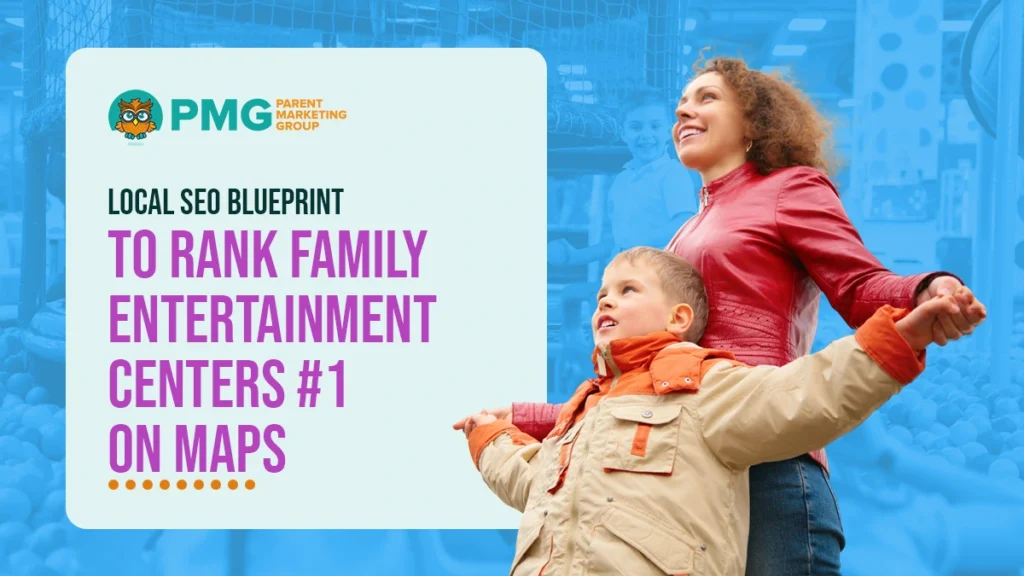The best social media platforms to reach parents go beyond the usual suspects, like Facebook and Instagram. While those platforms still play a role, today’s parents engage in a wider range of digital spaces where they seek advice, connect with communities, and make purchasing decisions. Whether marketing a childcare center, educational program, or family-friendly product, you need to be where parents spend their time online.
From fast-growing networks to niche parent-focused forums, the key is understanding how modern parents consume content and interact with brands. This guide explores unexpected yet powerful social platforms that help you build authentic connections, increase engagement, and ultimately grow your business.
Marketing for Parents: Best Practices

Marketing to parents requires a unique approach that balances helpful information with authenticity. Parents are not just consumers; they’re decision-makers looking for brands that align with their values and provide real solutions. To capture their attention and build loyalty, businesses must understand where parents spend their time online and how they engage with content.
Understanding Where Parents Engage
Parents rely on digital platforms for advice, inspiration, and community. Knowing where they are active is key, whether they’re researching products, looking for parenting tips, or engaging in discussions.
- Pinterest for discovery: Parents use Pinterest to find parenting hacks, meal ideas, and activity inspiration.
- YouTube for guidance: Video content helps parents learn about child development, product reviews, and DIY solutions.
- Facebook for community: Parenting groups offer a space for parents to share experiences and seek recommendations.
- TikTok for quick insights: Short-form videos provide bite-sized parenting tips and relatable content.
Understanding how parents use these platforms helps brands create targeted content that meets their needs. Instead of spreading efforts too thin, focus on where your audience is most engaged.
Crafting Content That Parents Want
Parents value content that is informative, engaging, and easy to consume. To connect with them effectively, brands must create content that resonates and feels relevant to their daily lives.
- Educational resources: Guides, checklists, and expert advice help parents navigate challenges.
- Story-driven content: Real-life experiences and customer testimonials build trust and relatability.
- Interactive formats: Polls, Q&A sessions, and live discussions encourage engagement.
- Time-saving solutions: Quick tips, templates, and life hacks simplify parenting routines.
Providing valuable content keeps parents coming back. Whether it’s a helpful tip or an inspiring story, the goal is to develop content that parents find useful and shareable.
Building Trust Through Authentic Engagement
Trust is everything when marketing to parents. They are naturally skeptical of brands that feel too sales-driven, so authenticity is key to earning loyalty.
- Transparent messaging: Be clear and honest about your products or services—no exaggerated claims.
- User-generated content: Encourage parents to share their experiences through reviews and testimonials.
- Personalized interactions: Respond to comments, messages, and questions meaningfully.
- Value over promotion: Focus on providing helpful content rather than constant sales pitches.
Parents appreciate brands that engage in genuine conversations and prioritize relationships over transactions. A strong sense of trust leads to higher engagement and brand advocacy.
Adapting to Parents’ Digital Habits
Parents consume content differently depending on their schedules and routines. Brands must adapt their strategies to fit how and when parents engage online.
- Mobile-first content: Parents often browse social media on their phones while multitasking.
- Short-form videos: Quick, engaging clips work best for busy parents with limited time.
- Email & newsletter marketing: Helpful content delivered directly to their inbox keeps them engaged.
- Consistent posting schedule: Regular updates keep your brand top-of-mind without overwhelming them.
By aligning content strategies with parents’ digital habits, brands can maximize engagement and build stronger connections with their audience.
How to Use Pinterest to Attract Moms and Dads

Pinterest is one of the most underrated yet powerful platforms for engaging parents. Moms and dads use it daily for inspiration, parenting tips, and product recommendations. Unlike other social media channels, Pinterest acts as a visual search engine, meaning content has a longer lifespan and continues to drive traffic over time. To successfully market to parents on Pinterest, brands need a strategic approach focusing on helpful, engaging, and highly shareable content.
Why Pinterest Works for Parents
Parents turn to Pinterest for everything from parenting hacks to meal planning and home organization. They actively search for ideas, making Pinterest an ideal platform for businesses looking to provide solutions.
- Evergreen content: Pins remain discoverable for months or even years, unlike posts on Instagram or Facebook.
- High-intent audience: Parents searching on Pinterest are often ready to take action, whether purchasing a product or trying a DIY activity.
- Visual appeal: Eye-catching images and well-designed graphics make content more engaging and shareable.
- SEO benefits: Optimized pins show up in search results, both on Pinterest and Google, increasing visibility.
Because Pinterest functions more like a search engine than a traditional social media platform, brands that provide valuable, well-optimized content can reach parents consistently over time.
Best Content Types for Engaging Parents
Not all content performs equally well on Pinterest. Parents are drawn to specific types of pins that help them solve problems, stay organized, or find inspiration.
- Parenting hacks & tips: Quick, actionable solutions for common parenting challenges.
- Meal planning ideas: Family-friendly recipes, lunchbox ideas, and meal prep guides.
- Home organization: Decluttering strategies, toy storage solutions, and cleaning hacks.
- Kids’ activities & education: DIY crafts, learning resources, and screen-free activities.
Focusing on content that provides real value makes it more likely to be saved, shared, and acted upon. The more useful and visually appealing a pin is, the greater its reach.
Optimizing Pins for Maximum Visibility
Keywords and algorithms drive Pinterest, so optimizing content correctly helps increase its visibility. A well-optimized pin has a higher chance of appearing in search results and being repinned by parents.
- Use keyword-rich descriptions: Incorporate parenting-related keywords naturally in pin titles and descriptions.
- Create high-quality images: Vertical images (2:3 ratio) with bold text overlays perform best.
- Add compelling calls to action: Encourage parents to click through to a website or save the pin for later.
- Utilize rich pins: These provide extra details and help pins stand out in search results.
By treating Pinterest like a search engine and using SEO-friendly tactics, brands can ensure their content gets discovered by more parents over time.
Engaging with the Parent Community
Success on Pinterest isn’t just about creating content—it’s also about engaging with the community. Brands interacting with parents and participating in the platform’s ecosystem see better results.
- Join group boards: Collaborating with other parenting-focused boards expands reach and visibility.
- Repin relevant content: Sharing useful pins from other sources builds credibility and engagement.
- Post consistently: Regularly adding new pins keeps content fresh and increases exposure.
- Monitor analytics: Tracking performance helps refine strategies and improve engagement over time.
Pinterest thrives on long-term engagement, so brands that consistently provide valuable content and interact with parents will see sustained growth.
YouTube Marketing Strategies for Parents

YouTube has become a major platform for parents seeking advice, entertainment, and product recommendations. Whether they’re looking for parenting tips, educational videos for their children, or reviews on family-friendly products, YouTube provides a trusted space where parents engage deeply with content. With the right strategy, brands can connect with this audience, establish credibility, and drive meaningful engagement.
Creating Content That Parents Actually Want
Parents turn to YouTube for content that is both useful and engaging. To capture their attention, videos must provide value and address their specific needs.
- Educational videos: How-to guides, parenting advice, and child development tips perform well.
- Product reviews & recommendations: Parents trust in-depth, honest reviews before purchasing.
- Kids’ entertainment & learning: Storytelling, sing-alongs, and educational content keep children engaged.
- Day-in-the-life vlogs: Relatable, real-life parenting content builds trust and community.
By focusing on content that helps, educates, or entertains, brands can create videos that parents want to watch and share.
Optimizing Videos for Maximum Visibility
Uploading videos isn’t enough—YouTube’s search algorithm favors well-optimized content. Strategic SEO practices help videos reach more parents searching for relevant topics.
- Keyword-rich titles: Use parent-focused keywords that align with common search queries.
- Engaging thumbnails: Bright, eye-catching visuals increase click-through rates.
- Detailed descriptions: Include relevant keywords, timestamps, and links to related content.
- Strong CTAs: Encourage parents to subscribe, comment, or visit a website for more resources.
A well-tweaked video stands a better chance of ranking in YouTube search results and appearing in recommended video sections, ensuring it reaches the right audience.
Leveraging YouTube Ads to Target Parents
YouTube advertising is a powerful approach to reach parents directly, as the platform allows precise audience targeting based on demographics and interests.
- In-stream ads: These skippable or non-skippable ads play before or during videos parents watch.
- Discovery ads: Come up in search results and on the homepage, reaching parents who are actively looking for content.
- Bumper ads: Short, six-second, non-skippable ads that deliver quick brand messages.
- Retargeting campaigns: Show ads to parents who have previously engaged with your content.
Using YouTube ads strategically helps brands stay top-of-mind and drive conversions among engaged parent audiences.
Engaging with the Parent Community
Parents value brands that actively engage with them, making interaction a crucial part of a YouTube marketing strategy.
- Respond to comments: Answering questions and engaging in discussions builds trust.
- Collaborate with influencers: Parenting YouTubers already have dedicated followings that trust their recommendations.
- Create playlists: Grouping related videos together keeps parents watching longer.
- Host live Q&A sessions: Offering real-time interaction makes brands feel more accessible.
By fostering a strong community, brands can turn passive viewers into loyal followers who return for more content.
Conclusion
Reaching parents on social media is about more than just showing up—it’s about showing up in the right places with the right content. By diversifying your strategy beyond Facebook and Instagram, you can connect with parents more meaningfully. Whether crafting helpful Pinterest boards, engaging them with YouTube videos, or sparking conversations on TikTok, the key is meeting them where they already are. Parents are actively searching for solutions, and with the right approach, your brand can become the trusted resource they turn to again and again.
Now’s the time to expand your marketing efforts and reach parents in ways that truly matter. Need help creating a strategy that works? Let Parent Marketing Group do the heavy lifting! Contact us today at (706) 899-3707 or visit our contact page to get started.






